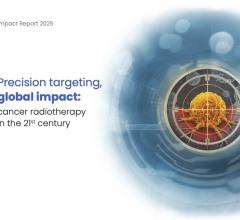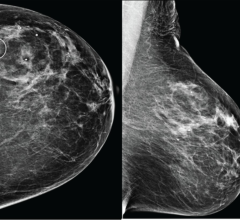February 8, 2013 – CT texture analysis of primary tumors may be a potential imaging biomarker in localized esophageal cancer following neoadjuvant chemotherapy, according to research being presented at the 2013 Cancer Imaging and Radiation Therapy Symposium. This Symposium is sponsored by the American Society for Radiation Oncology (ASTRO) and the Radiological Society of North America (RSNA).
This study evaluated the tumoral texture analysis on baseline and post-treatment CT scans of 31 patients with localized resectable esophageal cancer patients with a median age of 63 and who received neoadjuvant chemotherapy between 2007 and 2010. CT scans were performed before and after the use of chemotherapy and prior to surgery. All patients received platinum and fluorouracil-based chemotherapy followed by surgery. Texture parameters (mean-grey level intensity (MGI), entropy, uniformity, kurtosis, skewness and standard deviation of histogram (SDH)) were derived for four filter values to highlight structures of different spatial width: 1.0 (fine texture), 1.5-2.0 (medium) and 2.5 (coarse). Median follow-up was 21.9 months. Primary tumors became more homogenous following chemotherapy, as entropy decreased and uniformity increased. Smaller change in skewness following chemotherapy was a significant prognostic factor—median overall survival was 36.1 months vs. 11.1 months. Lower baseline entropy and lower post-treatment MGI were also associated with improved survival, although they demonstrated only a trend toward significance.
Texture analysis of the CT scans is a post-processing step, which was done utilizing proprietary software (TexRAD) that enhances the images in ultra-fine detail not visible to the human eye. Certain tumoral features changed consistently following chemotherapy, and some features were associated with overall survival.
"Though these results are for a very small number of patients, they suggest that the tumoral texture features may provide valuable information that could help us to distinguish which patients will do well following chemotherapy and which ones will do poorly," said Connie Yip, MD, the lead study author, a clinical research fellow at King's College London, United Kingdom and an associate consultant in radiation oncology at the National Cancer Centre, Singapore. "As a biomarker for treatment efficacy, this technique could save patients from unnecessary surgery and provide more definitive guidance in developing patient treatment plans with improved outcomes."


 December 11, 2025
December 11, 2025 









